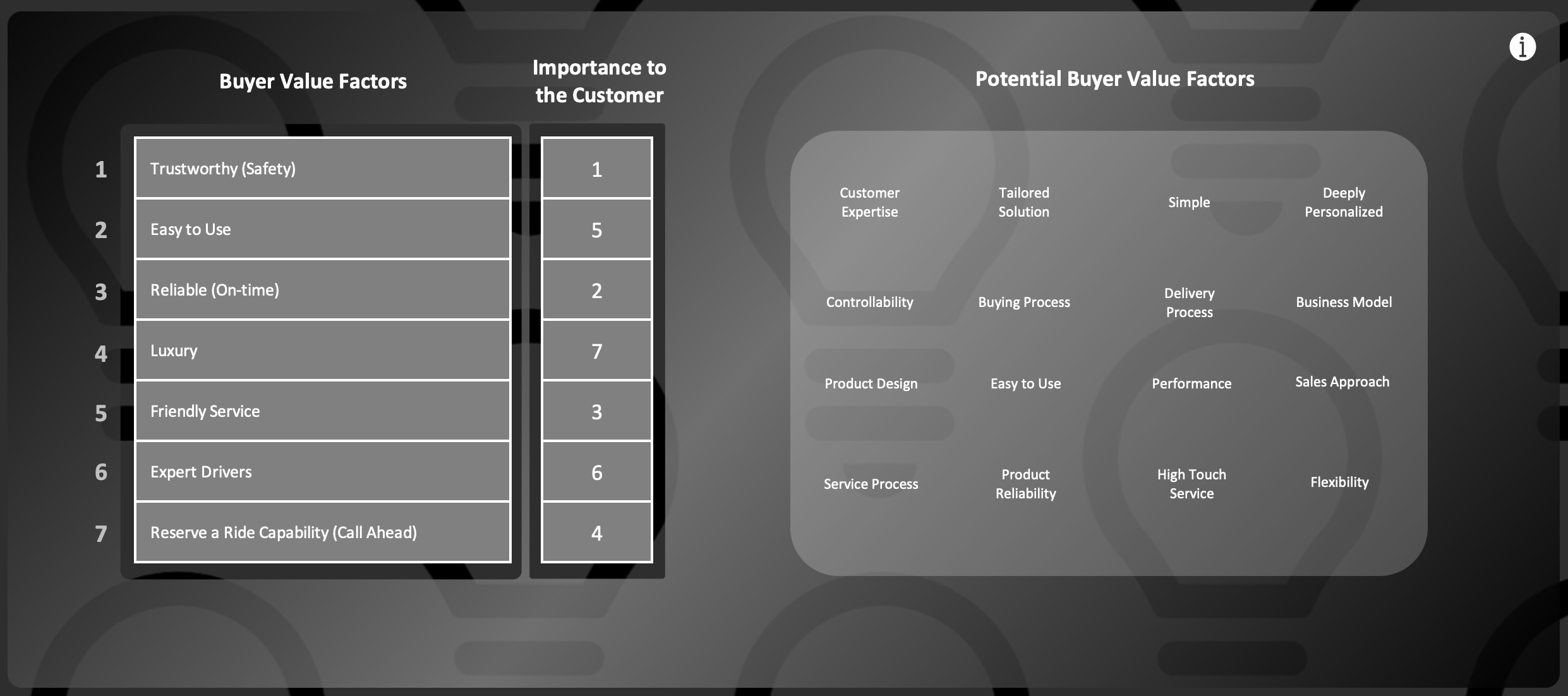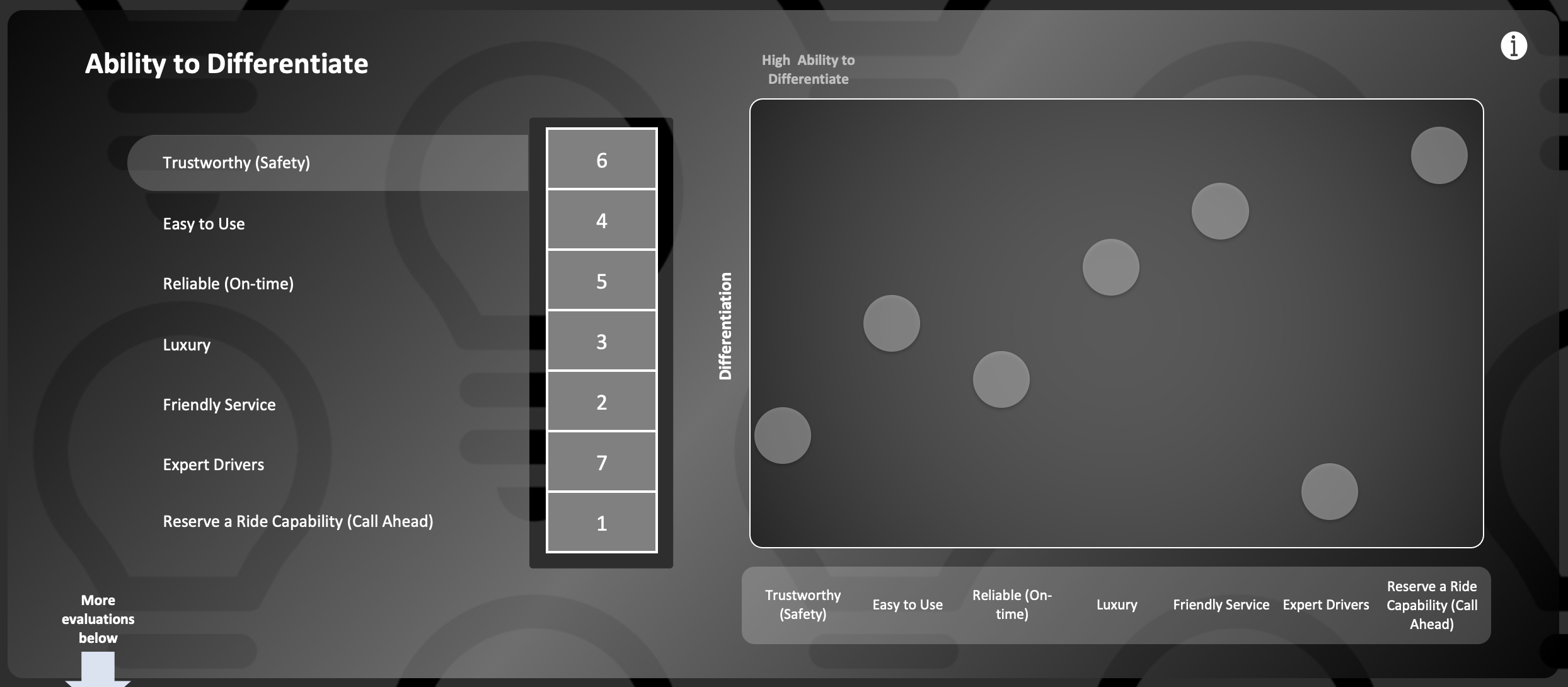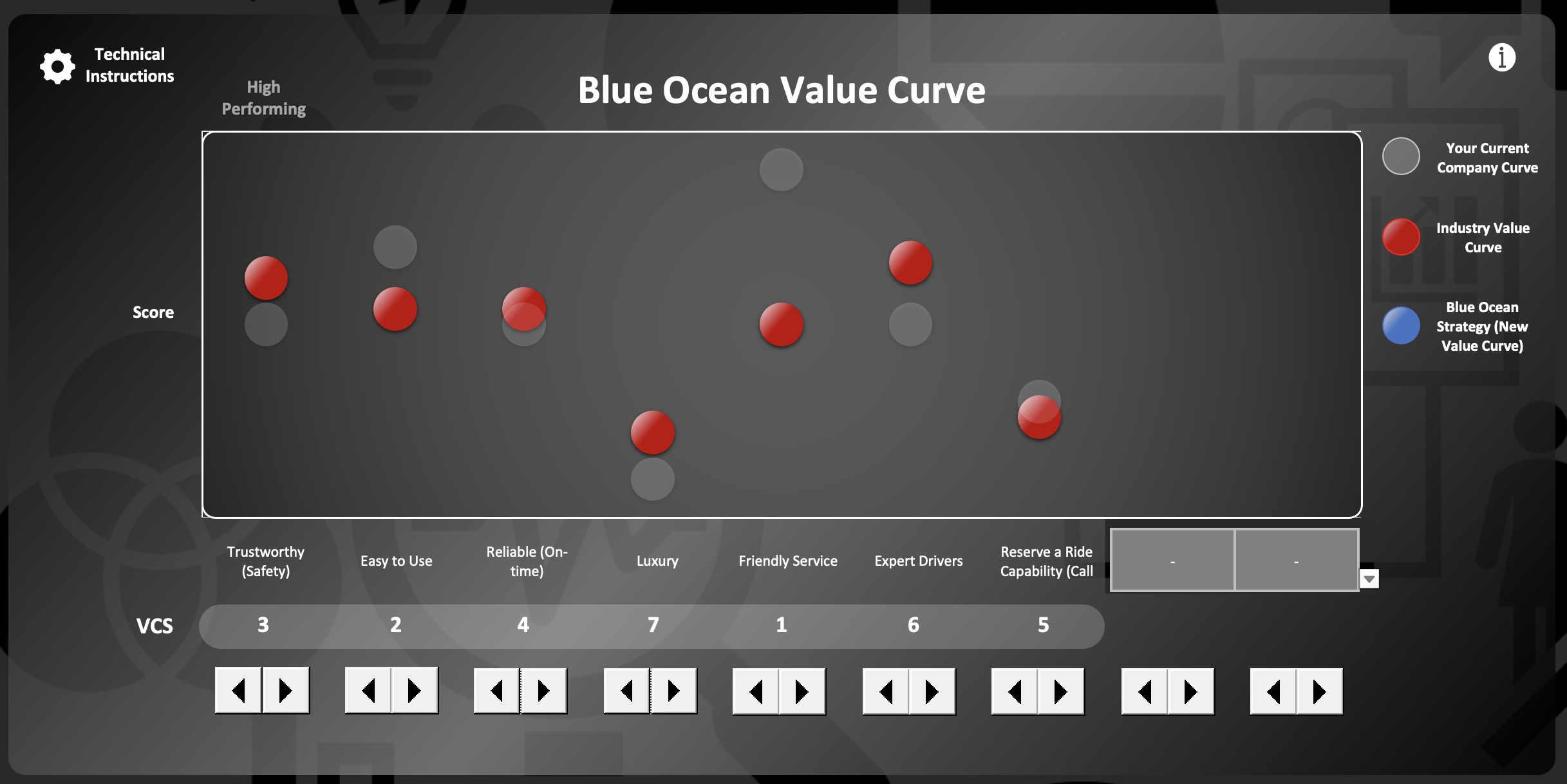Blue Ocean Strategy:
UBER
Let’s use Uber to walkthrough the Blue Ocean Strategy tool and help us understand how they created a new, differentiated solution in the taxi and passenger transportation market.
What is a blue ocean strategy?
The goal of a blue ocean strategy is to differentiate in a highly competitive environment to create a new market, new buyer values, and new demand.
Essentially, blue ocean strategy uses (1) differentiation or (2) potential to lower cost to create a unique solution in a highly competitive market. That highly competitive market is a red ocean. The new market is a blue ocean.
In this framework, the first three steps help us determine the current competitive landscape, and the final two steps guide us to creating our blue ocean strategy.







